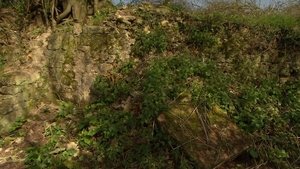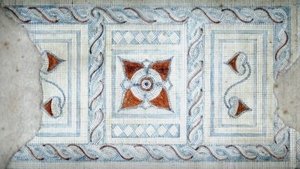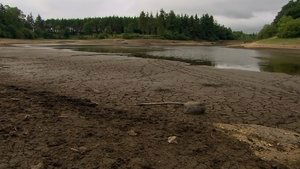
When Stephen and Stephanie Fry bought a few acres of prime Somerset pasture to graze their horses, they inadvertently also bought the remains of Buck Mill, an 18th-century water mill. But as Stephanie began to look into its history, she realised that there may have been a flour mill on the site since Domesday. So she called in Tony Robinson and the Team to help her unravel the mystery of their mill. For Professor Mick Aston, the prospect was too good to turn down. As the diggers get to work uncovering the whole of the 18th-century mill, Mick takes off into the landscape to look for clues from earlier centuries. He finds more than he bargained for: the whole area was awash with the tell-tale mill streams needed to power grindstones. The dig throws up constant reminders of the importance of wheat and bread to the medieval population, and of how rich millers could become. The only spanner in the works for this industrial dig is the surprise discovery of an Anglo Saxon comb.

Tony and the Team get a unique opportunity to dig at an army firing range at High Ham in Somerset and investigate a series of mosaics first discovered 150 years ago. Everything indicates a Roman villa, though perhaps not on such a grand scale. The inhabitants may have been Romanised Britons, living from the 2nd to the early 5th century. Matt volunteers as a slave for the day. When the cold east wind sets in, Phil and the other diggers temporarily "down tools". They are joined by Martin Brown from the Defence Estates and Roman finds specialist Philippa Walton.

Tony Robinson and his team celebrate their 200th dig. Jane Marchand from Dartmoor National Park Authority was alerted by a walker to standing stones peering out of an East Devon reservoir at low level. This is Francis Pryor's dream site, but Mick has also been interested in Dartmoor for some time. They have stone circles, stone rows and cairns apparently dating from 3000 to 1500 BC. There is a central mound which interests Francis, and which Phil thinks is Stone Age, thus pre-dating the other monuments. But the cairns may be recent, throwing into doubt the dating of the other features. This is cultivated farmland, atypical of Dartmoor's usual bleak landscapes. John is dubious about getting any meaningful geophysics results, but proposes nevertheless to wheel his trolley through the mud. Stewart and Henry create a 3D image of the prehistoric landscape. Phil teaches Matt his favourite activity, flint-knapping.